Technology’s Impact on Air Quality Control Monitoring
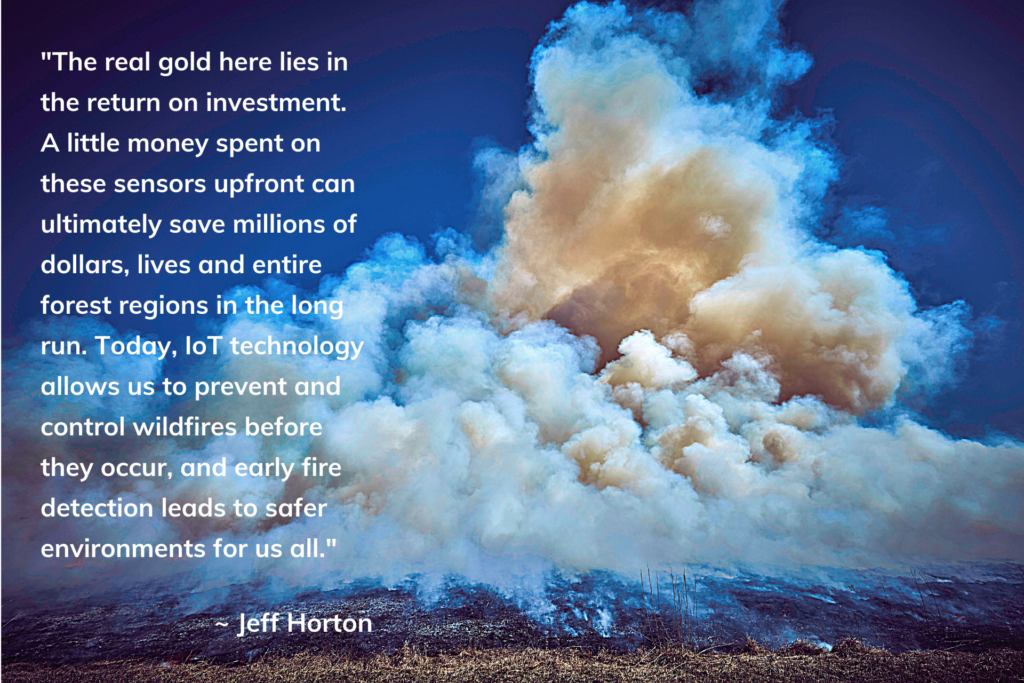
At this very moment, wildfire season is currently underway in North America, and since the start of this year alone, more than 27,000 wildfires have consumed nearly two million acres according to the National Interagency Fire Center (www.nifc.gov). Though many people hear the word “wildfire” and immediately picture a forest in California, the reality is these natural disasters are prevalent across the country. Wildfires are everywhere The Verge, a technology news website, announced recently that roughly 56% of homeowners in the United States face some sort of wildfire risk in the upcoming decades. Bottom line: wildfires are becoming more prevalent and costly every day, and these fires are affecting more than half the population and significantly changing our quality of life. Just a few decades ago, we didn’t have the technology to prevent or predict changes in the surrounding air quality, but now we do, and through it, we can create a better world. Today’s technological advancements allow us to be proactive rather than reactive when it comes to our overall health and safety. By leveraging sensor technology, we have a better chance of predicting and preventing significant changes in the environment, like a drastic shift in air quality before a wildfire begins. This insight allows us to make better decisions based on intentional insights, and our increased access to data provides us with the right information to better control our surrounding environments. Technology is powerful, and this power can and should be used to our advantage. One of my favorite ways to witness the power of technology transforming real-world issues is by exploring the ways sensor technology has a tremendous impact on air quality control monitoring. Today, internet of things (IoT) technology and satellite are the best tools for early detection and prevention of wildfires. Our approach to air quality control Believe it or not, air quality has as much impact on the world as the daily temperature. With climate change causing drastic shifts in the environment, it’s important that we pay close attention to the quality of the air we breathe, as it affects our overall quality of life. As you know, trees play a critical role in our ecosystem, so we must be very intentional and proactive about protecting the forests around us. This is where sensor technology makes a big difference. With a small machine, we can now track and predict changes in the environment and our surrounding air quality, which ultimately helps us control, prevent and predict conditions that lead to wildfires. At FreeWave, we provide autonomous sensors that are strategically placed in remote locations to track and record relevant data metrics such as temperature, humidity, wind, direction and particulate matter. These readings help industry experts know what’s in the air and how the air is changing. Once this data is collected and transmitted to the cloud, we are then able to analyze it and provide alert and proactive responses where needed. We have created a single pane of glass approach, where anyone with access can log into a portal and see in real-time what is happening in the areas surrounding their deployed sensors. The interesting thing about our sensors is that they are fully powered by solar energy, and satellite signals transmit the recorded data. We are basically offering a “buy, install and forget” resource that makes life significantly easier for industry and environmental experts. There is a ton of value here. Not only are we taking an in-depth look at what’s going on in the environment through air quality control monitoring, but we are also taking that information and transforming it into action. The real gold here lies in the return on investment. A little money spent on these sensors upfront can ultimately save millions of dollars, lives and entire forest regions in the long run. Today, IoT technology allows us to prevent and control wildfires before they occur, and early fire detection leads to safer environments for us all. A unique human aid We are making life simpler and safer for all by using technology to do what humans can’t. Back in the day, people had to sit in an operation tower for hours, looking out to catch any major changes in the environment. Today, there is a major shortage of people willing to do this kind of work, and can you blame them? As humans, we can only be in one place at a time doing one thing at a time, but with technology, this is not the case. With simple sensors, we can now monitor and control a lot more environments at a much more affordable rate. All this to say, the goal here is not to replace humans with technology as some might think; what we are really doing is enhancing human ability through the power of technology. I’ve worked in technology for over 30 years, and every day I witness its evolution. I know it’s hard to imagine a world without cell phones, but I can still clearly recall the days when cell phones took up the entire trunk of a car, and now look at the world, most of us carry the same ubiquitous smartphone in our pockets. Technology is amazing, and we have the opportunity to use it to our advantage. At FreeWave, we are taking the capabilities of mobility – LTE, 4G, Satellite, Wi-Fi, Bluetooth, 900 MHz– and marrying them with sensors. The data we gain from these sensors is saving us time, money and resources. At the end of the day, we’re taking away the need to “overthink” industry issues, like how to better prevent forest fires, and instead are replacing our questions with data-informed predictions and timely proactive responses. Every day, we strive to provide industry leaders with the tools and technology needed to spearhead faster and safer environments for us all. This is certainly not a boring business, and I thoroughly enjoy working for a company that is using technology to have an impact on the things that matter most.
Got Data? Now what?
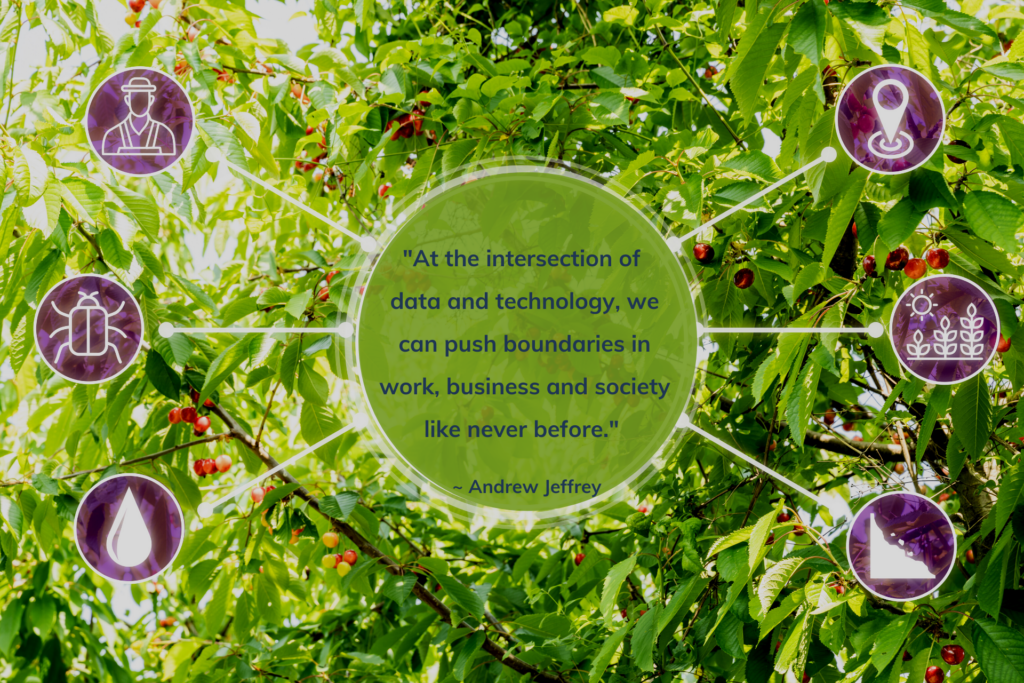
It’s hard to imagine a world without the daily convenience of modern technology. Just yesterday, I joked with my kids about the world before the internet – a time when we actually had to go to the library to look up unknown information. I can still remember the early days of my college career back in the late 90s, the internet had just come out, and we were all getting used to this new phenomenon called a “search engine.” Life has drastically changed over the last 25 years. Now, nearly all the information we want and need is at our fingertips. Today, we have more access to data than most people know how to handle. Data is all around us, collected through the day-to-day actions and reactions of our lives. When we take the time to intentionally analyze, interpret and distribute the data metrics available to us, we can make smarter and more efficient decisions. There is so much to explore, and while our increased access to data is pretty interesting, the reality is that the combination of data and modern technology can change the world. Like many things, though, there are two sides. Sure, industrial companies can capture huge amounts of data, but it also raises the question: now what? How do you put all that data to work? Breaking barriers and pushing boundaries At the intersection of data and technology, we can push boundaries in work, business and society like never before. Data insights allow us to be more precise and accurate in our day-to-day work, which allows us to be more effective and efficient. The operational benefits here are endless, including improved quality control, reduced energy consumption, enhanced safety and increased operational consistency. Just take a look at the food industry, for example. Many field workers in smart agriculture rely heavily on data insights to control, predict and create the best environments for quality crops and harvest. The more accurate their predictions, the better their harvest, and the better their harvest, the faster we receive our food through the supply chain. Today, internet of things (IoT) technology can connect remote and mobile assets, like a tractor, for instant data access, making it easier for farmers to be more efficient and effective in their work. It’s really amazing when you think about it. Data is transforming how we operate in this world, creating better environments for us all. The FreeWave impact At FreeWave, we are constantly pushing the boundaries of technology to create faster, smarter and more efficient work environments. I’ve been a part of the FreeWave team since 2019, and I am constantly amazed at the ways our technology provides innovative solutions for real-world issues. Our products enable our customers to improve their work processes, and through our single pane of glass approach, we offer a simplified experience for businesses and industry leaders to receive automated technology that transforms data metrics into real-time execution. One of my favorite use cases to discuss is FreeWave customer that uses drone technology to deliver food and other valuable resources to far-reaching areas across the globe. With FreeWave products, they can run a smarter and more efficient operation. Their robotics delivery system is combating many of the complex access challenges the world faces on a daily basis. Our IoT technology is helping them solve complex issues with simplified tech solutions, and simple solutions create more time, energy and space to focus on what matters most: people. If you need a product to help you bridge the gap between technology and data, FreeWave is your solution. We are enablement partners, helping every one of our customers accomplish their complex goals. It’s inspiring to work with brands and businesses striving to create a difference in real-world issues. Our technology plays an intricate role in sustaining work environments and supporting entire industries around the globe. Data makes the difference At the end of the day, data is more than mere statistics; data is the key to our efficiency, productivity and safety. Data makes the difference in energy consumption reduction. Data makes the difference in the overall quality and safety of our daily environments. Data makes the difference in everything. Every day we have the opportunity to use data to our advantage, and at FreeWave, we are helping industrial innovators do just that. As technology continues to evolve, we will continue to provide top of the line IoT solutions that transform data into actionable insights and execution so you can not only access a treasure trove of data, but also know exactly how to answer the age-old question: now what?
Data is everywhere, even on Mount Everest: Sensor-to-cloud and extreme environments
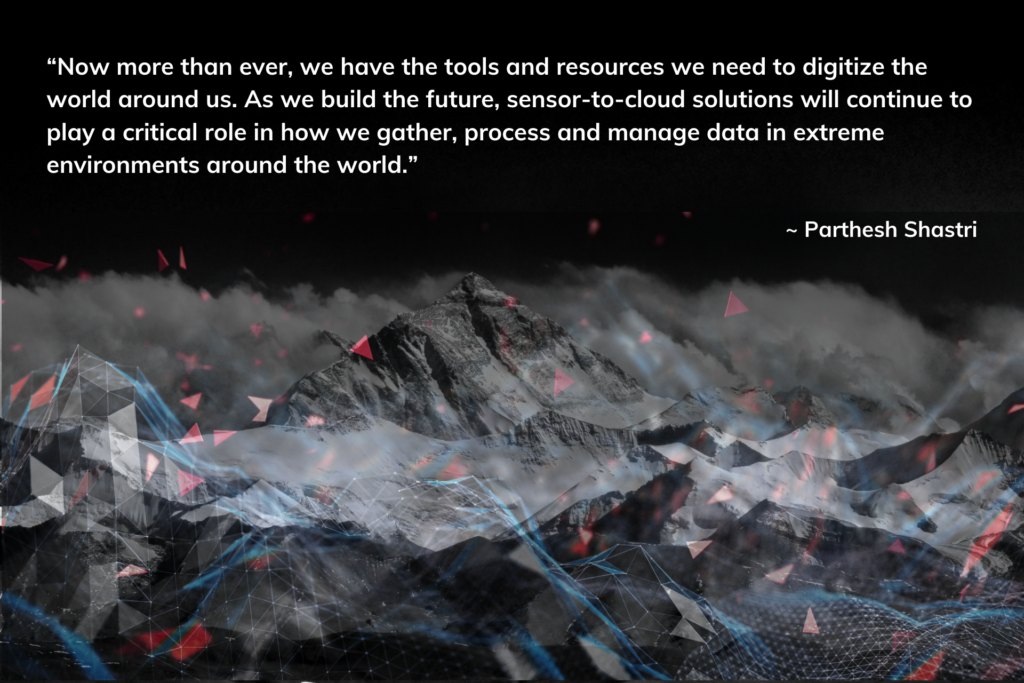
Technology – from Mount Everest to the farm It’s amazing what technology can do when paired with human will. Just a few years ago, a team of scientists made history as they trekked up Mount Everest with the goal of running environmental studies. With backpacks full of sensors (which included FreeWave technology), these men pushed boundaries to create a new normal. When we intentionally use modern technology to our advantage, we can create better, safer and more productive environments within every industry. Today, the same technology used on Mount Everest is now powering multiple earth science programs transmitting sensor data from remote environments to earth scientists, climatologists and meteorologists through cloud servers. This is just one example of many where sensor-to-cloud solutions have transformed our ability to interact with extreme environments in the modern world. A deeper look at extreme environments Typically, when someone thinks of an extreme environment, they imagine harsh, rugged terrain in a far-off remote location; however extreme environments aren’t limited by this definition. Take a large farm, for example, with a multitude of deployed assets and equipment across hundreds of acres. Traditionally, an operation like this requires an employee to physically check on the farm equipment multiple times a week, manually turning valves on and off, in addition to monitoring and controlling the overall farm environment. These day-to-day tasks are not only time-consuming but physically draining. In this case, the operational output required on the farm makes it an operationally extreme environment, and extreme environments are just one space where sensor-to-cloud solutions shine. Sensor-to-cloud in the real world Today, sensor-to-cloud systems utilize deployed sensors to collect and transmit data from remote locations. These sensors send the gathered information back to cloud servers for further research and analysis, enabling entire teams to utilize their limited time and resources more effectively. With sensor-to-cloud systems, we eliminate the often-laborious mechanics of middlemen procedures so that industry leaders can focus on what matters most. Let’s revisit that farming example. With sensor-to-cloud technology, farmers can automate the repetitive tasks of their operations. Something as simple as discrete soil sensors further allow farmers to virtually monitor their crop health, creating more time and space to focus on other high-value tasks. This gives them time, often an invaluable asset, to do what’s needed. In a sense, we can improve the productivity of an operation with an automated suite of sensor systems. Imagine the difference a network of sensors can make. The FreeWave difference For several years now, FreeWave products have been a leading resource solution for extreme environments. Our sensors were a part of the great Mount Everest expedition, and today, we have deployed sensors in many areas, including pipelines in Alaska, ice shelves in Antarctica, smart farms across the country and many other locations – rugged and traditional. We are providing the groundbreaking technology needed to monitor data in extreme environments so that our partners and customers can make the best, informed decisions for their operations. As the Chief Technology and Product Officer at FreeWave, I am constantly amazed at the impact our products have on the world. We are working with some of the major brands of our time, helping them solve massive problems affecting society at large. Our technology solutions serve entire industries, like oil and gas, agriculture, transportation and traffic, as well as many others that contribute to the well-being of the globe. It is great to be a part of a company where we can say our products are a part of the solution for life’s essentials. Every day, we help industry leaders identify their pain points and provide them with a single pane of glass product solution that helps them see the data wherever they are without the drain of additional resources. Our rich portfolio of radios, gateways, cloud software and analytics allows us to stitch together a range of packaged ready to use applications that solve our customer’s problems through simple, turn-key solutions. Sensor-to-cloud in the future Data is everywhere, and now more than ever, we have the tools and resources we need to digitize the world around us. As we build the future, sensor-to-cloud solutions will continue to play a critical role in gathering, processing and managing data in extreme environments around the globe. As I look at the world before us, I see endless opportunities to continue to leverage technology and data to build a better and more informed life.
The Importance of Data in the Life of Bees
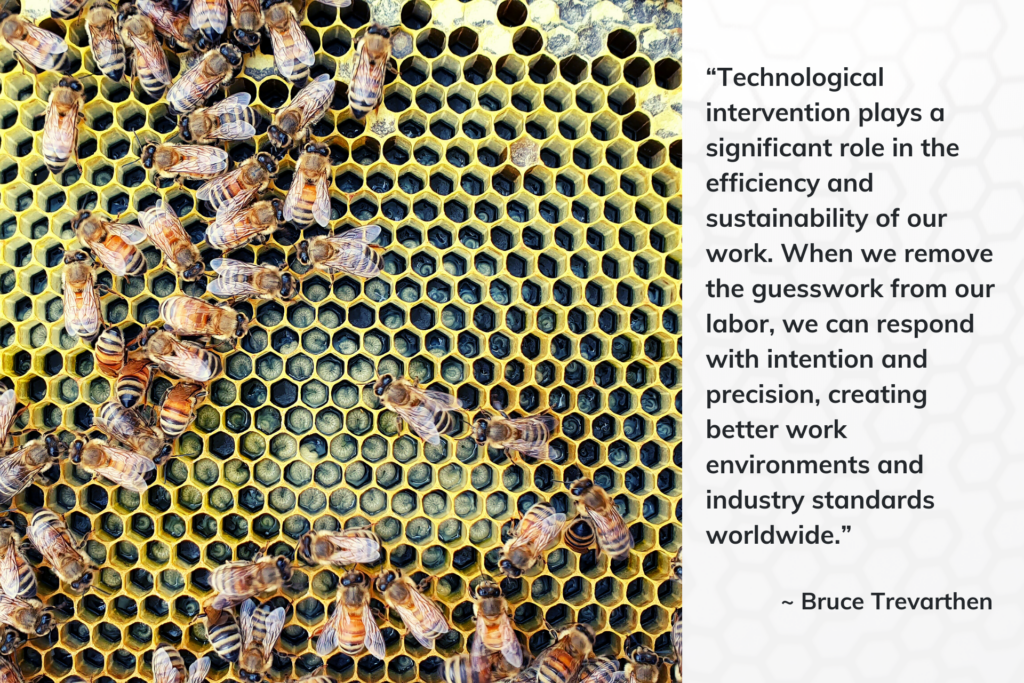
Have you heard the buzz? Data is everywhere, informing, influencing and affecting the direction and decisions of our lives daily. Due to modern technology, we now have access to a world of knowledge that was otherwise unavailable just 50 years ago. This data is gold, and when we intentionally utilize technology to mine and refine it, we can create a more sustainable world. Industrial internet of things (IIoT) technology makes a sizable and sustainable difference in multiple industries – including apiculture, the business of beekeeping. Much to my surprise, I learned that taking an intentional approach to data collection and distribution profoundly impacts the lives of bees and surrounding societies. Data and beekeeping In 2019, I went on a mission with my company ModuSense to create an IIoT solution that could aid specific industries with several deployed assets in need of environmental monitoring. After exploring applications in forestry and horticulture, our journey led us to apiculture farming and the high value commodity of honey. I believe in fully immersing myself in business and technology, so I became a beekeeper to understand the complexity of the apiculture industry better. Beekeeping is a high-value asset in New Zealand and Australia, almost exclusively because of the manuka honey variant. While traditional clover or bush honey may earn between $4-6 dollars a kilo, manuka honey can earn as high as $200 a kilo, making every drop critically important. Proper hive monitoring is essential for quality production, but beehives (especially the manuka variant) often grow in difficult terrain within remote locations, making them challenging and expensive to access regularly. Without IIoT technology, beekeeping is a naturally complicated process. Oftentimes, beekeepers must utilize helicopters to deploy and check on their hives, which is time-consuming, expensive and challenging. However, with the right IIoT solutions, such as sensors that monitor hive conditions, the beekeeping process is simplified, increasing productivity and overall harvest quality. With access to the right data, beekeepers don’t have to check on the internal conditions of their hive manually; instead, they can manipulate and control the hive’s environment from afar through sensors to create optimal conditions for production.This IIoT technology is helping us augment the beekeeping process through effective data monitoring, which is ultimately creating a simpler and more sustainable approach to hive operations. Simple solutions In many ways, beekeeping is quite similar to dairy farming, meaning better environments create better products. When cows receive access to the best pastures, they inevitably produce better milk which then creates better dairy products for us to consume. The same is true in the life of bees. When bees intentionally receive access to the best environmental conditions and quality nectar, they are able to become high-strength, crop-ready colonies which naturally produce a high-quality harvest. Effective regulation of the bees’ environment is critical to ensure the best yield, and this is where IIoT technology is making a world of difference in the apiculture industry. Bees are incredibly sensitive to barometric pressure, humidity and temperature, all of which play a role in their ability to produce as a colony; bees also need to maintain a central weight to operate at peak performance. As such, the best way to ensure a quality harvest from a beehive is to maintain the colony’s weight and manage the hive’s temperature. With proper data insights, we can do this remotely by studying and monitoring the internal collective health and conditions of the hive. Without lifting the hive’s lid, which disrupts the harvest process, we can virtually control the bees’ environment without the extra cost or time of added deployments. These insights are easy to monitor from a single pane of glass, making critical information accessible faster than a bee can fly (which is pretty fast at 20 mph!). Integrating special IIoT sensors, we developed the HiveBeats Environmental Monitoring Sensor, HiveScale V5 and Brood Monitoring Sensors that now provide precise insights into the life of a bee, which ultimately determine if and when human intervention is needed. This allows for significantly fewer errors to occur and saves time and money along the way. Data connects life – for bees and people At ModuSense, we are proud to develop timely IIoT solutions, including sensor devices, cloud-based data routing, data storage, analysis platforms and connectivity hardware to provide solutions that are easily deployed and ready to fit for purpose. In partnership with FreeWave, we are committed to accelerating hardware and software IIoT development capabilities in meaningful and immediately measurable ways for remote industries around the globe. As the CEO of ModuSense, I am proud of the work we have done to create real-life change in the world of apiculture. Our special sensors enhance the hive cultivation process by extracting critical internal data insights, all while creating a culture of industrial sustainability for beekeepers along the way. We are creating a new way forward by leveraging the power of IIoT technology to monitor data and using that insight to respond with actionable execution. Sustainability is about finding ways to use less to do more and our ModuSense sensors are doing just that for beekeepers around the globe. Today, technological intervention plays a significant role in the efficiency and sustainability of our work. When we remove the guesswork from our labor, we can respond with intention and precision, creating better work environments and industry performance worldwide. I am proud to contribute to this type of change in the life of bees and beyond.
FreeWave Technologies Welcomes Jeff Horton as Chief Revenue Officer
BOULDER, Colo. – April 25, 2022 – FreeWave Technologies, the leader in Industrial internet of things (IIoT) wireless connectivity and edge computing, today announced that it is adding a new Chief Revenue Officer, Jeff Horton. Mr. Horton is an accomplished, solutions-focused executive with a proven approach to revenue generation and will apply that experience now to support FreeWave in its innovation and growth trajectory. “Joining FreeWave at this critical juncture in its growth provides an exciting platform for me to engage decades of experience of evaluating industry trends to further revenue opportunities,” Horton stated. “The Industrial space has undergone such monumental change in its evolution and FreeWave is well-positioned to support its customers in embracing data-based decisions from the edge.” Recently, FreeWave introduced a series of solutions for remote monitoring and data analytics in its Fusion™ platform expanding the way to connect devices in even the most remote locations with its Fusion Satellite solution. This is the beginning of a new era of data-based edge computing tools available to industrial customers worldwide. “We’re eager to have Jeff join the team at such a great point in the journey. His customer-centric approach and broad market understanding will certainly add to the already strong team we have at FreeWave. I’m thrilled for things to come.” Said CEO, Kirk Byles. About FreeWave Technologies For 28 years, we’ve connected the unconnected with a reliable ecosystem of edge intelligent radios and solutions — manufactured in the U.S. — to optimize the extreme edge of remote industrial operations. We enable high-fidelity data capture, analysis, control, and automation via a scalable IIoT platform purpose built for the harshest, remote environments in the world. A joint venture with ModuSense makes global innovation agility and turn-key industrial IoT edge solutions a reality, accelerating our ability to bring fully integrated, plug and play IIoT solutions to the market quickly and cost-effectively. With deployments in 39 countries, and a legacy of solving thousands of customer challenges across multiple industries, we can help transform and future-proof your operation now. Visit freewave.com to get started.
Technology Simplified: Leveraging Data in the New Digital Era
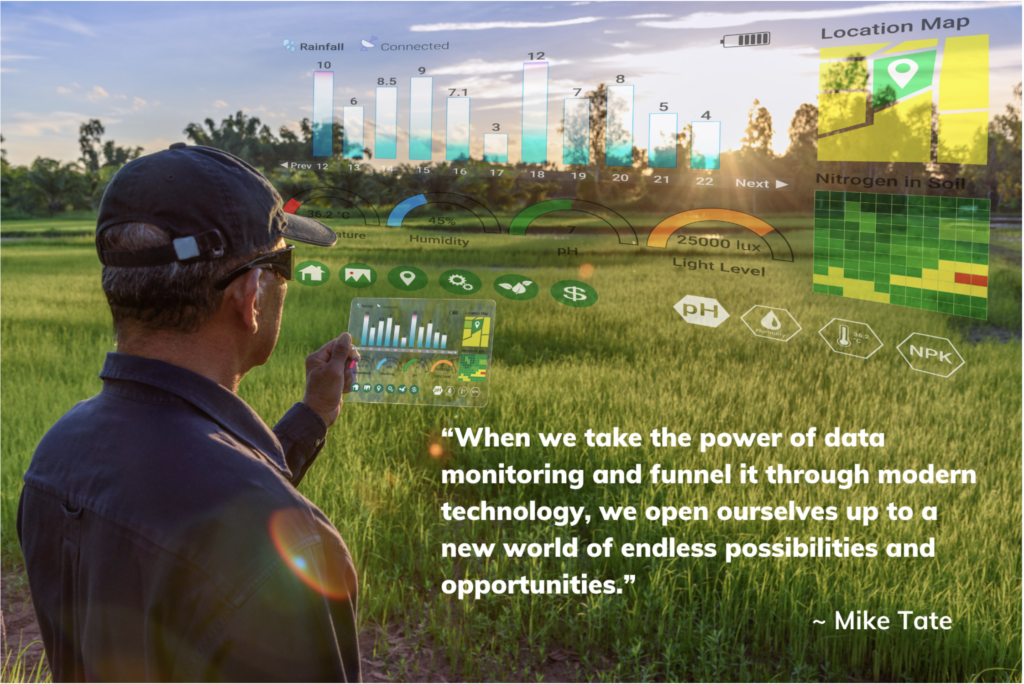
Excited by tomorrow, we face a new world filled with endless possibilities each day. Thanks to modern technology, simple sensors open the doors to our favorite restaurant, edge computing allows manufacturers to spot and correct production glitches before they happen, and high-tech traffic cameras analyze and record thousands of license plates daily to spot stolen and unregistered vehicles while also identifying suspected criminals. It’s no secret that the world is evolving before our eyes, and through the technological advancements of this digital era, we are creating a more efficient world. The power of data Data is a powerful tool of knowledge, and lucky for us, it’s everywhere! Every one of our actions is driven by a manual process of data – like the simple act of putting on a jacket when it gets cold, or an automated process of data – like a valve instinctively shutting off when a water tank gets full. Today we have the technology to effectively process, analyze and distribute data metrics in tremendously impactful ways. What does greater simplification look like for industrial leaders? Remote operations simplified When leveraged effectively, industrial internet of things (IIoT) solutions take remote operations to the next level, simplifying the work process for teams and industries across the globe. Think about some of the most popular high-value remote assets today, like drones, video surveillance, or even center pivot irrigation systems – these entities perform so well because they do what humans can’t. In mere seconds, IIoT technology can process, distribute and respond to data that would otherwise take an entire team hours, days or even weeks to achieve. In the not so distant past, industrial operations relied solely on data consumption (i.e., how much water is in the tank; what temperature is the water), but today, advancements give us the ability to respond nearly instantaneously to that collected data with actionable execution. Today we can view and control the management of an entire operation remotely on our cell phone. We can see how much water is in a tank or what temperature that water is at and automatically change and adjust the water levels and temperatures from near or far. As a result, the amount of time, resources and energy needed to run businesses has transformed entirely, and this evolution allows us to create an enhanced world and standard of work. Simple deployment Remote operations are oftentimes in rugged terrain, making them difficult or even impossible to access. At FreeWave, we solve this complex issue by providing pre-configured ready-to-deploy solutions, complete with everything needed to achieve the mission at hand. For example, through FreeWaves’s joint venture with ModuSense, we’re simplifying connectivity to cloud with a variety of pre-configured and ready to deploy monitoring and sensing solutions by supplying the entire solution with a 12-month data plan, dashboard, 12W rapid recharge solar panel, satellite connectivity and Bluetooth connectivity. You can use your mobile phone to validate the data directly from the gateway without having to wait for satellite transmission. We all know the “gotchas” when it comes to buying technology. Simple deployment means you’re ready from day one, without needing to buy additional components. Real-world impact As Chief Operating Officer and SVP of Global Sales and Marketing at FreeWave, I get a front-row seat to the real-life impact modern-day technology is having on lives, businesses and entire industries. The essentials of life have become simplified, and in the process, more people and businesses receive greater access to the things that matter most like critical information, metrics and potential outcomes. Creating a more sustainable world and preserving natural resources like food, air, energy and water have been at the forefront of IIoT since FreeWave began almost three decades ago when we brought long range, low power consumption, C1D2, 900 MHz connectivity and radio technology products to our customers. Since then, our connectivity options have greatly expanded by adding EDGE Compute, Software, Industry Protocol Conversions, Data Broker & Cloud, a complete end to end solution and with it comes the responsibility for greater environmental stewardship. We’ve all seen the devastating impact an environmental catastrophe, like the 2010 Deepwater Horizon oil spill, can have on the globe. Simple mistakes can and do cause enormous repercussions that affect us all. The truth is, with human interaction there will always be the cost of time and possible room for error. Technology, however, is different, as it allows us to not rely solely on human capacity and depend more on interconnected and advanced systems. Now, we don’t have to wait for someone to run into a situation or crisis and manually pull a lever or travel to turn off a valve. Instead, preprogrammed automation or a simple click of a button or flip of a switch from virtually anywhere in the world can control your high value remote assets. FreeWave is a technological pioneer in the 21st century. We have connected the unconnected with a reliable ecosystem of edge intelligent radios and solutions to optimize the extreme edge of remote industrial operations. Through our single IIoT platform, we provide expanded capabilities for data capture, analysis, control and automation. Our single pane of glass approach provides a simple, single vendor, one-stop-shop solution for remote operations worldwide. At the end of the day, when we take the power of data monitoring and funnel it through modern technology, we open ourselves up to a new world of endless possibilities and opportunities. It’s one thing to have data; it’s an entirely different thing to know how to leverage that data. At FreeWave, we are constantly pushing the boundaries of data monitoring and modern technology through our IIoT solutions and creating a better, safer and faster world of work for industries around the globe.
Data Connects Life: A Deeper Look at the Power of Connection for IoT Champions
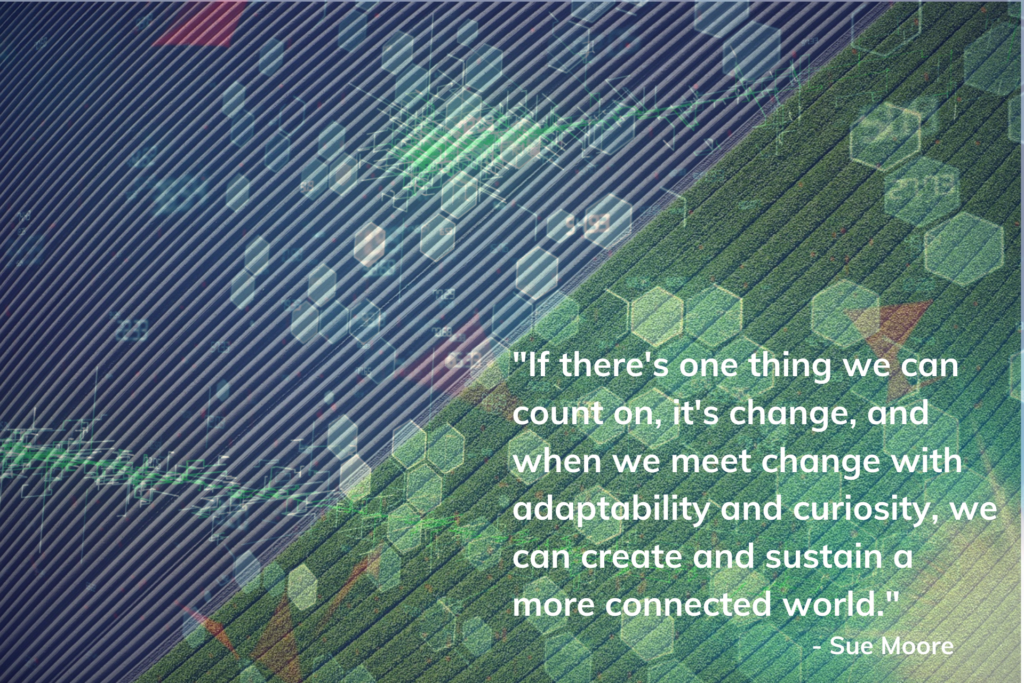
Every day, the world shifts in a new digital direction, making our lives simpler and equally more complicated all at the same time. I can vividly remember the introduction of email. I had just started my career in tech, and I kid you not, my coworkers and I questioned the efficiency of this new digital communication system. Back then, taking the time to craft an email, when I could easily make a phone call or walk to the office next door, felt foreign and unproductive, but now, decades later, I can’t imagine my life or work without the power and ease of email communication. If there’s one thing we can count on, it’s change, and when we meet change with adaptability and curiosity, we can create and sustain a more connected world, one where technology invites us to innovate, collaborate and engage with each other and the environments we live in! More technology. More data. The Mckinsey Global Survey has found that our global response to the pandemic has accelerated the rate of technology by several years. What does that mean for real people? Over time, we have discovered a new world filled to the brim with data that both informs and transforms our day-to-day lives. From smartphones to traffic management systems, the Internet of Things (IoT ) is revolutionizing life as we know it, connecting us to more people, places and systems than ever before. Connection is a powerful tool, and when harnessed effectively, it can change the world. The interdependent relationship between our natural and digital world is quite profound; in today’s society, we operate as one. In smart agriculture, for example, effective data can make a significant difference in overall crop and herd health, which, in the end, affects us all. Whether we’re on the farm, on an oil rig in the middle of the ocean or in our own backyards, technology connects us. Data is everywhere, and when this data is measured and distributed carefully, it transforms entire industries. Accessing the data you need on your terms For the last 28 years, FreeWave Technologies has pioneered a unique IoT revolution, reinventing the way industrial IoT is used in the modern market. We connect the unconnected with a reliable ecosystem of edge intelligent radios and solutions to optimize the extreme edge of remote industrial operations. Through our software, we provide IoT champions with real-time data insights to create better and more sustainable businesses. To achieve transformative operational optimization, industrial leaders need visibility into data and the ability to proactively manipulate that data and act on the insights gained from it. Our vision is to build an ecosystem of edge intelligent radios and solutions to transform the extreme edge of industrial operations into a connected part of their enterprise. Our integrated edge connectivity and computing solutions provide expanded capabilities for high-fidelity data capture, analysis, control and automation via a single industrial IoT platform that is readily scaled as each edge computing need evolves. We call it a single pane of glass. With a legacy of solving thousands of customer changes across multiple industries and deployment in 39 countries, the goal is to continue to future-proof operations so that remote work becomes more autonomous and, dare I say, simpler. It all brings us more connected with our collective purpose to create a better and more sustainable world. Data connects life. The more we see, the more we understand, and the more we understand, the more equipped we become to make better decisions. As the Director of Marketing at FreeWave, I am closely connected to the people and operations most impacted by our work. I know firsthand how powerful connection is for the IoT champions we serve, and every day I witness the power of data to transform the world. Putting it in perspective Take the water and wastewater industry, for example; in this industry, clear and controllable data insights are key to achieving effective operational management. At FreeWave, we provide these actionable data insights such as moisture levels and weather predictions through our sensor and weather monitoring technology, which ultimately allow water and wastewater industry leaders to be proactive in their business rather than reactive. A proactive and informed approach to operational management makes the difference in creating a more sustainable environment, and a more sustainable environment transforms our communities and the surrounding world. FreeWave’s productivity technology is removing barriers to data and helping industry leaders solve unique challenges like never before. Where some people may only see tech software – a little box with some wires, chips, and sensors – a much deeper reality occurs. We are all connected, and today, IoT champions get to leverage the power of this connection, along with technology and data, to create a better world, one industry at a time. I am so proud to work for a company that is connecting the world in unique and innovative ways. Every day, I see the impact of technology and what it means to be more connected through data, giving us critical insight. What we do with that data is where the magic happens. This is where we can use connectivity to push boundaries for greater innovation, make best use of our people, create safer work environments by understanding what’s happening in hard-to-reach terrain, and even take bold action to architect a more sustainable world.
Is Your Farm Losing Money from Rural Broadband Issues?

Today, of all things, a strong internet connection is essential for successful farming. So, is your farm losing money from the rural broadband issues you’ve experienced? Only a generation or two ago, it would seem almost nonsensical that farmers might struggle to keep up without internet access. Yet here we are, living in a world where 73 percent of farms say they have a laptop or desktop and more than half own a smartphone, according to a USDA report. With the rapid growth of precision farming, including digital tools and IIoT-enabled sensors that automate and improve the farming process, solid and reliable internet access will only matter more as time goes on. So, is your farm losing money from rural broadband issues or a weak connection? Learn more below. Why is Rural Broadband a Problem? Rural broadband is one of the most popular internet solutions for modern farming operations, but the simple fact is that it doesn’t always do the trick. Broadband is set up through a series of routers, which sometimes leads to spotty reception or inconsistent farm wifi systems. Rural internet is also not always available in some areas where farmers need it, which could slow down harvest production or cause farmers to hesitate when adopting new technologies. What Are the Disadvantages of Broadband? Connection speeds vary depending on location and signal strength. Rural broadband is often more expensive than in urban areas, which cuts into profit margins. Setting up broadband is time-consuming and costly and may require additional solutions. In rural areas with hilly terrain, such as Appalachia, broadband may not be an option at all. Broadband issues may prevent farmers from keeping up with automation trends (costing them money and reputation in the process) Why is Broadband Important for Farmers? Precision agriculture helps farmers use internet access to collect and analyze data, conduct business with vendors, and connect to IIoT-enabled devices, such as sensors or drones. How Do Farmers Get Internet? 27 percent of farmers have a digital subscriber line (DSL) 14 percent use a broadband connection through satellite 12 percent use a cable or telephone line According to Modernfarmer.com, 25 percent of U.S. farms still don’t have internet. What Percentage of Rural Areas Have Internet Access? According to the U.S. Small Business Administration Office of Advocacy, only about 73.6 percent of rural areas have robust and reliable internet access. With so many tools emerging that make farming more efficient and lucrative, this percentage is almost guaranteed to dwindle in the coming decades. Why Is There No High-Speed Internet in Rural Areas? For the most part, it comes down to price and technological limitations. Installing miles of fiber optic cables and 5G towers in remote areas doesn’t always make sense for internet providers, who may not be able to recoup their investment. Additional solutions such as a wireless bridge, which adds up to 60 miles of solid wifi connectivity, may be necessary even if broadband can be installed. This is one reason satellite technologies have become a solid solution for farmers living in rural and remote areas. Satellites used to be too costly to operate for most businesses, but that too is quickly changing. Do Farmers Need Internet? Looking at the tools a farmer’s competition is likely using, you’d be hard-pressed to say anything other than “yes” to this question. Without strong internet for farmers relying on agricultural automation methods, profit margins could drop and result in a loss of market share. Why is Internet Access Important for the Diversification and Rebranding of Rural Areas? In more ways than one, the future of agriculture will rely heavily on a solid internet connection. From automation tools that increase profits and yields to improving the quality of life for agricultural professionals and their families, internet connectivity is just as crucial for business as it is for personal reasons. As the world becomes increasingly global and digitized, it’s easy to forget the vital role farmers play in making our society work. In fact, it will be farmers who create enough healthy food for our rapidly growing population, which is expected to approach 10 billion people by 2050. See how FreeWave’s Fusion Bridge solution can upgrade the internet connection for your operation.
Frustrated With Your Farm’s Bandwidth?
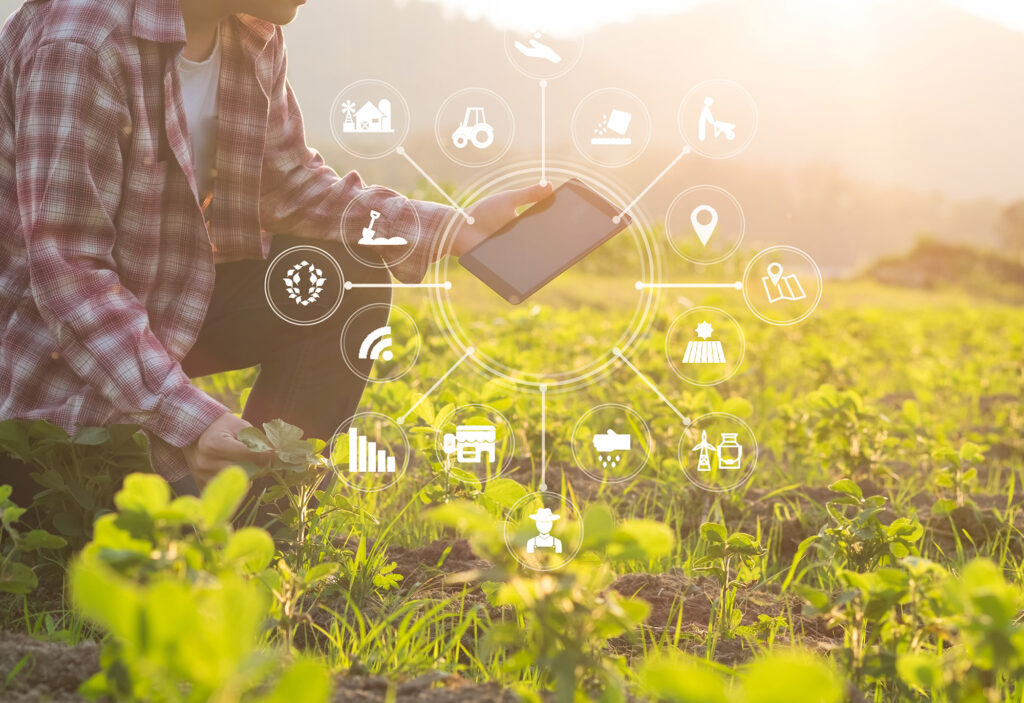
A good Internet signal is essential for smart farming and precision agriculture. A wireless bridge solution may just be the boost for your operations. In the age of smart farming and precision agriculture, a weak Internet signal is something that can no longer be tolerated. Your farm’s sensors and devices rely on solid WiFi connectivity to send and receive data, which is essential for boosting crop yields and healthy food production without expanding resources. If you’re frustrated with your farm’s bandwidth, a wireless bridge solution can extend your network and improve security at your operation. Learn how below. What is a point-to-point wireless bridge? As its name implies, a point-to-point wireless bridge connects two users wirelessly. Two routers, known as endpoints, typically link up through dual-radio Wifi radio or optical laser. Farm WiFi systems are often enabled through a point-to-point wireless bridge in an agricultural setting. This helps extend the range of Internet connectivity and enhances the signal in more remote areas of operation. Since many precision farming tools send and receive harvest cycle data in real-time, consistent and robust connectivity is essential. A wireless bridge can upgrade your network’s current capabilities and protect your data. What does a Wi-Fi bridge do? A wireless bridge is a tool that connects two WiFi networks over one wireless channel. This sort of connection is used in neighboring towns and districts, at manufacturing sites, and on large plots of land in an agricultural setting. What is the difference between bridge mode and wireless bridge? A wireless bridge connects two segments and enables data sharing between the two. Bridge mode is a configuration within your router that turns it into an access point for transferring data. Bridge mode essentially turns your router into a switch. It can help broaden WiFi access on a farm or rural area where connectivity historically has lagged or struggled, just like a wireless bridge. Depending on preexisting hardware and the size of the plot of land being farmed, one solution may be a better fit for you. How far can a wireless bridge reach? Three to five miles is the industry standard for many wireless bridge devices. But more innovative products, such as FreeWave’s Fusion Bridge, can be hooked up to existing networks and reach as far as 60 miles. Large farms, or those with multiple facilities located on the premises, can significantly benefit from this greater range. Plus, more than two networks can be hooked up, meaning home connectivity could also be added if you wanted. How do I set up a wireless bridge? Setting up a wireless bridge involves three steps: obtaining a wireless bridge and a second router, positioning the devices, then connecting them to the network so that everything’s safe and secure. The steps below outline the process: Choose a modern router that has bridge-mode capabilities. (Most will, but be sure to look when shopping.) Similarly, choose a wireless bridge product that fits your needs in terms of strength and distance. Position your bridge so that it’s in range of your current router. Place your new router in a location where you want robust Internet connectivity. Read your product’s guidelines and follow the steps to connect the bridge/router to your existing network*. *Make sure you activate all safety features, such as encryption and firewalls, on all devices to protect your data. Are you frustrated with your farm’s bandwidth? A wireless bridge solution can be beneficial for farms of all sizes. With greater signal strength and better security, you can gather and analyze data about your crops in real-time and never have to worry about delays that could mess up operations (and your bottom line as well). Learn how FreeWave equips farmers with the innovative tools they need to thrive. Contact us today for help with your network solutions.
Your Employees are Talking, But Are You Listening?
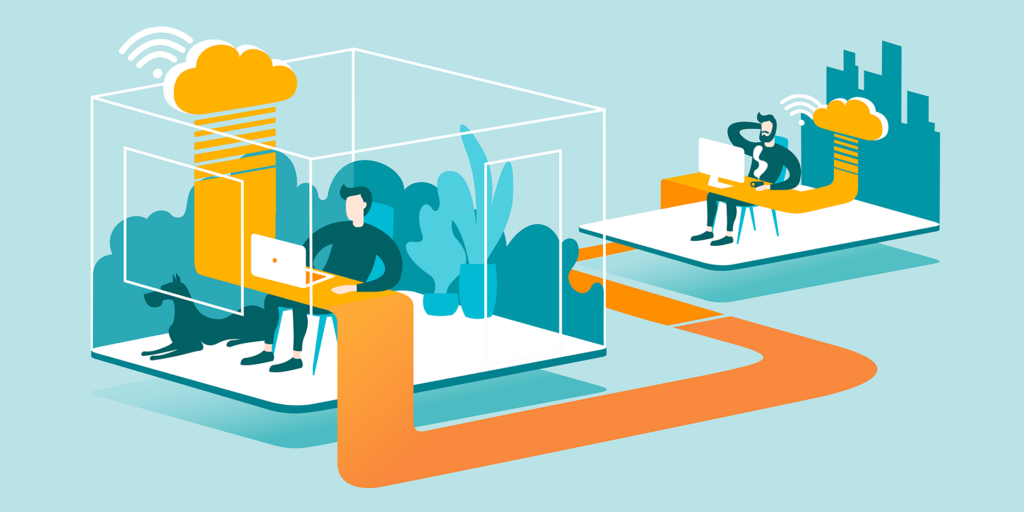
FreeWave’s Kirk Byles explains why listening to your employees is an easy way to increase engagement and productivity among remote teams. WIRED recently published an article about why we are seeing pushback from executives about working from home despite the fact that businesses have transitioned successfully to the WFH model and employees routinely express greater satisfaction with it. The article highlights the disconnect in both planning and execution between executives and staff and it basically comes down to three things: assumption, bias, and transparency. It’s not about knowing all the answers, it’s about asking the right questions. One of the most important things we’ve done at FreeWave during the pandemic when working from home wasn’t a choice, but a necessity: increase the cadence of our engagement survey to every six months and *really* listen to feedback. Like most businesses in the last two years, we had to react quickly to the changing tides of COVID. We shut down our office on March 13th of 2020 and, after consistently receiving meaningful and reliable feedback from our staff, we decided to transition to a “remote encouraged” culture. And, it’s working. The article mentions that executives have very differing views, experiences, and appreciation for in-office than most of their own staff. There are assumptions and biases about what is needed for both productivity and engagement and about the experience that most staff have versus the experience of the executive. The survey refers to it as “a focus group of one. I have X, Y, and Z resources and experience so that must be true of everyone in the company from Assembler to Customer Service and Accounting.” We approached the challenge of engagement with a simple premise: we don’t know the answer so let’s ask questions and base an iterative plan on the data. We wouldn’t start developing a product without market research so why would we do the same with employee engagement? Transparency and the Fail Fast Philosophy In the article, Brian Elliott of Future Forum cites the reticence of executives to announce an action plan if they “don’t know all the answers”. Maybe it’s because we’re a tech-based business where iteration is the norm or maybe COVID taught us lessons in adaptability but, whatever the case, we’ve always understood the fail-fast philosophy is not just for the technical side of the company. While actively addressing the issues of assumption and bias in collecting the survey data, we still had one more challenge to address and that was transparency. To that end, not only do we present ALL survey data in our quarterly All Hands; we also announce specific plans to address areas of concern. We set expectations and not only encourage employees to hold us accountable for the action items but acknowledge that these plans build upon each other. In every, all-hands gathering we summarize any changes in survey results, announce whether the previous two- quarters plans’ have seen any success, and move forward with new plans to either maintain or improve engagement results. These relatively short timelines and repeated testing allow us to move quickly to actively address not just employee needs but the needs of the business as a whole. Results As any businessperson knows all it takes for top talent to leave is a phone call from a recruiter on the right day. Businesses who have neglected to both survey their employees, publicly announce results, and work on improving engagement are seeing this in droves. I’m sure there are many other companies like FreeWave that don’t have the ability to provide many of the perks that other large tech companies rely on such as gyms on-site or free food or even salaries in the top 10%. However, on the flip side, many of those companies have doubled down on returning to the office and implemented micromanagement and monitoring tools of their staff and even old-fashioned dress codes and attendance policies. Their employees become more frustrated at losing the flexibility, trust, and better work/life balance benefits they have come to appreciate during the pandemic. If they were successful and thriving over the past 18 months, why should we consider they wouldn’t be going forward? Maybe we’re lucky, but we’ve been able to attract some really top-tier talent from larger organizations by providing, not just the flexibility employees’ demand, but the trust that allows them to flourish.



